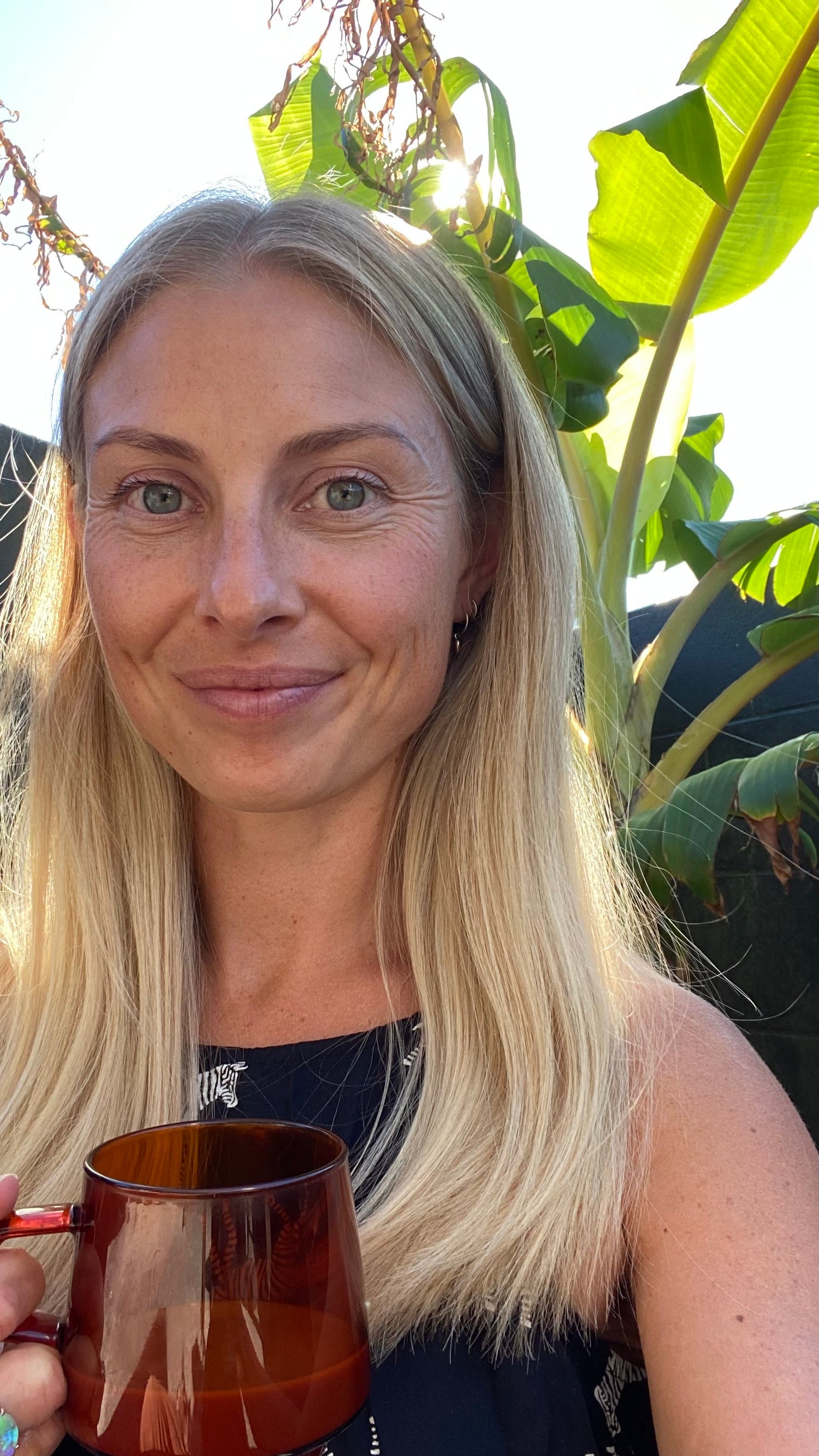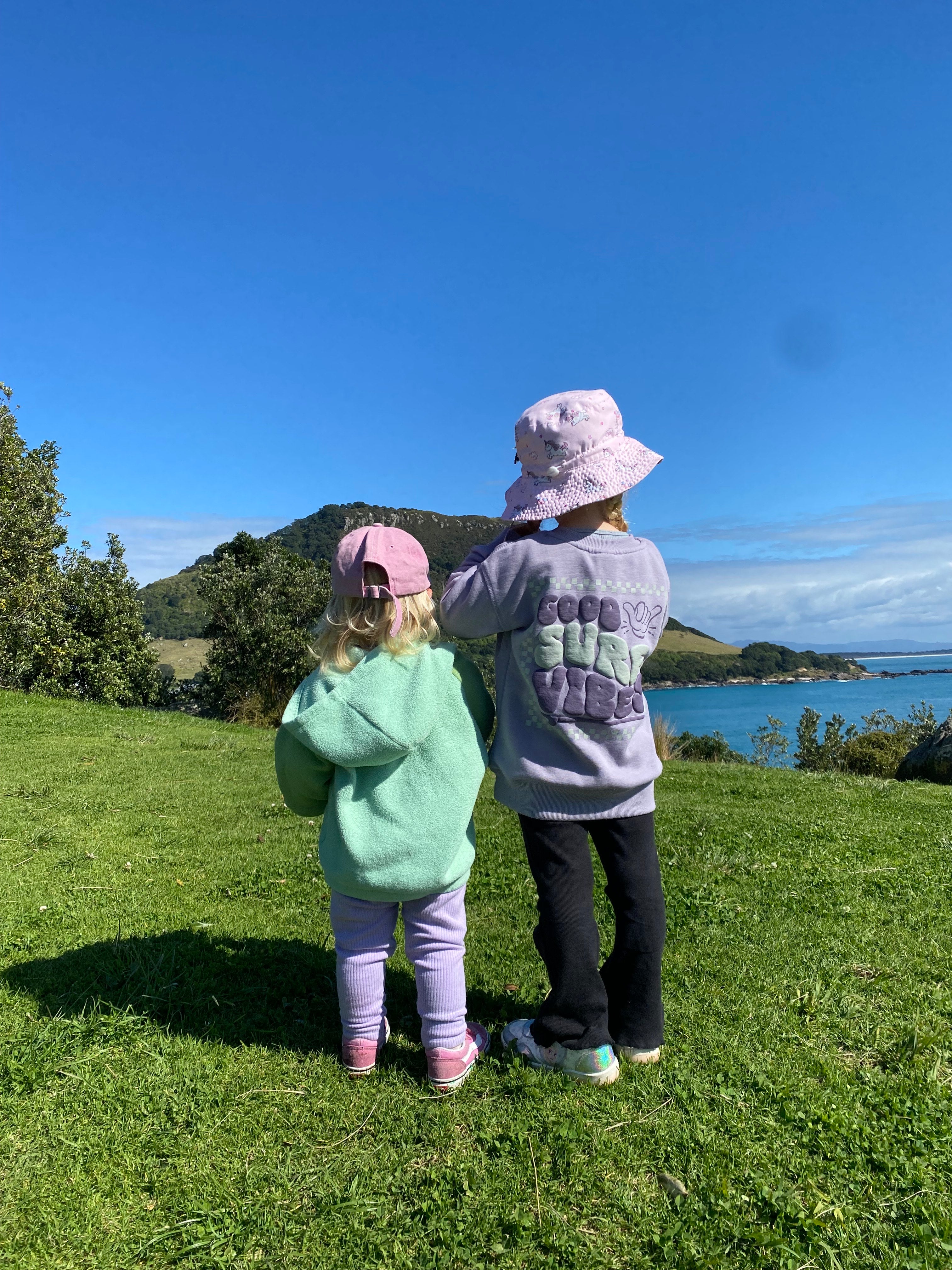
Hi, I’m Nicole
Maker of the soap
Drinker of the coffee
Seeker of the sun
Lover of nature
Mumma of two
Collapsible content

The Story
My husband and I decided we wanted to have a baby, but it wasn’t as straight forward as we expected.
After stopping birth control and waiting 18 months to start ovulating we decided to get a check-up with a fertility expert. This was extremely uneventful and provided no clear answer, there were no issues, "be patient and mindful of your lifestyle" was the advice.
It’s 2018, I’m in the lunchroom and come across a 6-page article in the New Zealand Listener titled “Toxins at home - from sperm counts to obesity, scientists are only beginning to understand the long-term health effects of many chemicals in everyday use. How to survive the war at home?”. It left such an impression on me that I took a photo of each page and emailed it to my husband.
This opened my eyes to how plastics, herbicides, pesticides and synthetic fragrances are endocrine disruptors. They can mimic hormones, block hormone receptors, and alter hormone production, throwing your body out of balance.
Why does this matter? Your endocrine system controls the hormones that make reproduction possible. It regulates egg and sperm production, ovulation, and pregnancy.
The Why
As a millennial I grew up during peak plastic and peak perfume. My lunch box was full of cling-film and pop stars were hawking perfume. Life was convenient, fragrant and toxic. I was leaving more than just footprints and needed to clean up my way of life.
Fast forward seven years and two daughters later. Daily life looks a lot more low-tox but there are still plenty of areas to improve. The thing is you can’t unsee all the places endocrine disruptors can be hiding so low-tox became normal for our family.
When my kids started itching behind their elbows and knees with what our doctor called a “nonspecific rash” I questioned the soap we were using. We tried the expensive natural, eco, gentle products that were on the market. Our doctor prescribed us big plastic bottles of “soap free” cleanser with a long and complicated list of ingredients that read like a foreign language. The scratching continued.
The Journey
With a low-tox lens and my love of cooking I went full earthmother and tried to fix my kids skin myself. My first handmade soap was a “soap free" bar and a massive fail! It was a greasy mess, making our bath a slip hazard. So I pivoted and went in the direction of a handmade natural soap. I was skeptical and thought the “soap” was the issue. But the proof was in the pudding and the girls stopped itching soon after using my first batch.
I had fixed my kids skin issues with my handmade natural soap and knew other families would be having the same experience. So I reached out to New Zealand based soap manufacturers thinking that they could produce and package my soap recipe. The answer was NO.
The eco or natural soap we buy in our supermarkets is made from imported soap bases that are remelted or rebatched in New Zealand. Local factories melt the soap chips, add fragrances, colours, botanicals, or additives, then pour it into molds.
Pivot number two. Outsourcing my soap production wasn’t an option if I wanted to provide an honest soap. The only option was to make it myself, so the batches grew from 10, to 50, to 100 bars. This is when TURN TO NATURE entered the room. Like most Mums, this isn’t the only thing I have going on. Alongside being Mum, and working a part time job, I find time to produce 100 handmade natural soap bars per week. The reason behind my limited weekly release.
Natural Soap vs Commercial Soap
OIL+ WATER +LYE =
SOAP and GLYCERINE
Glycerine is a natural moisturiser. The soap cleanses your skin and the glycerine protects it. Simple right?!
I know what y’all are thinking… What makes this different to the liquid and bar soap we buy in the supermarket?
Glycerine is like gold in the cosmetic industry. It’s the key ingredient in your moisturisers, creams and lotions. Removing glycerine from soap allows manufacturers to sell it separately for higher profit.
Long story short, the liquid and bar soap you are buying in the supermarket has had the glycerine removed. The remaining soap is cut with colour, fragrance and synthetic preservatives. In other words- irritants.
The more ingredients you add, the more opportunity there is to have a reaction.
For most people this isn’t a problem, and the supermarket soaps do the trick. But our babies with their delicate skin need that glycerine as a barrier against dryness and environmental stressors.
